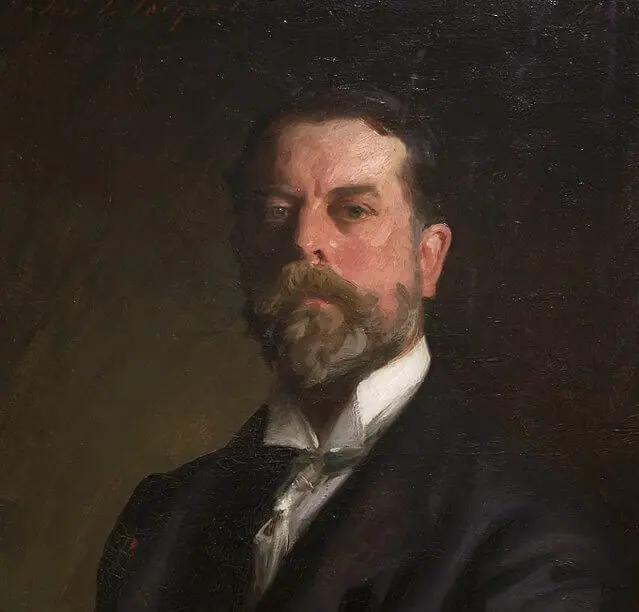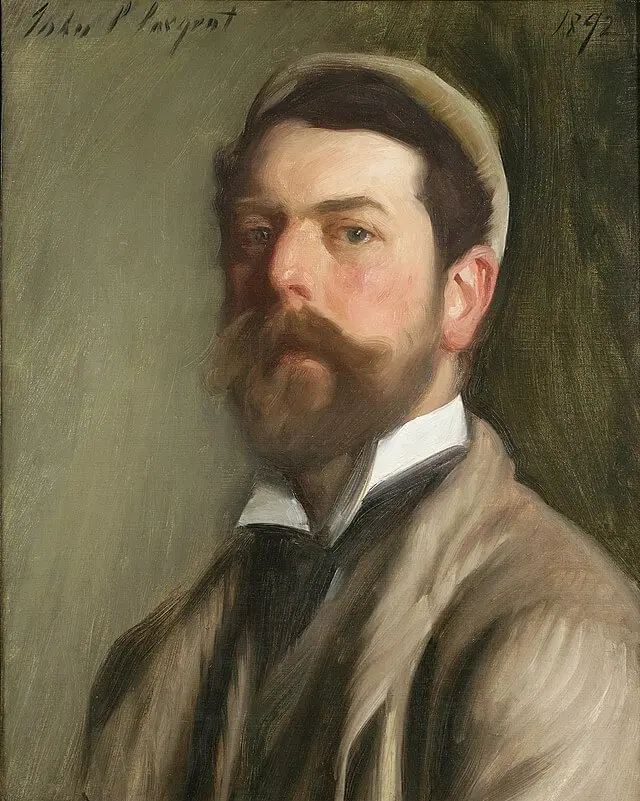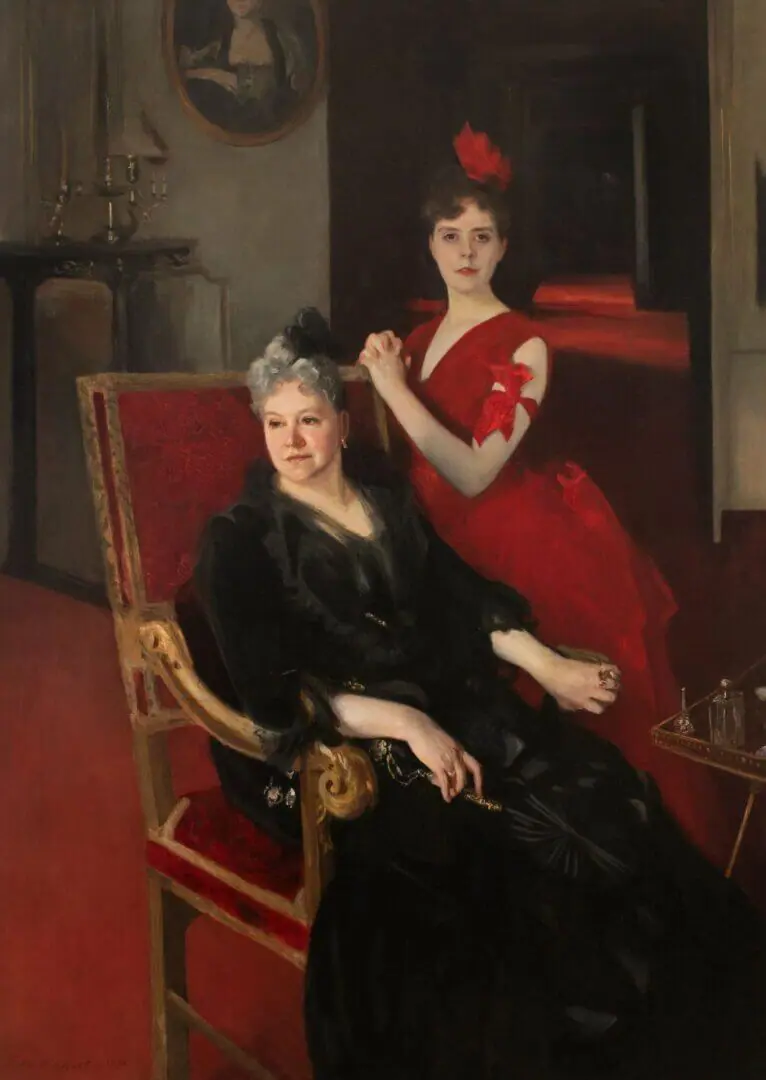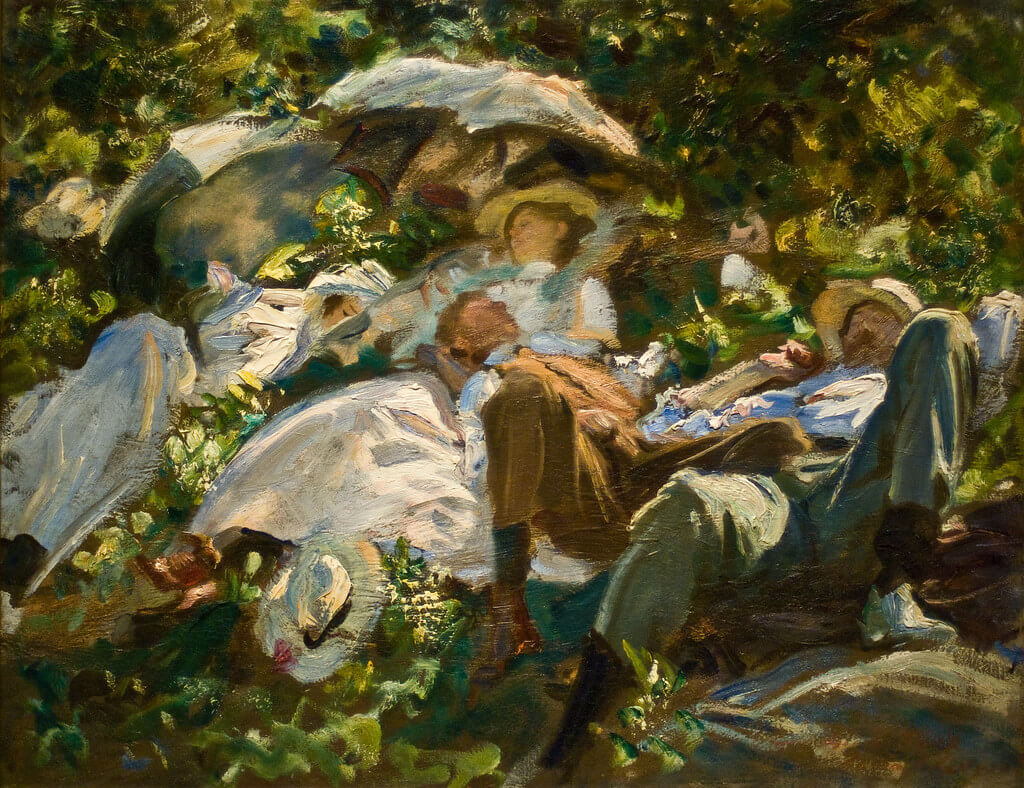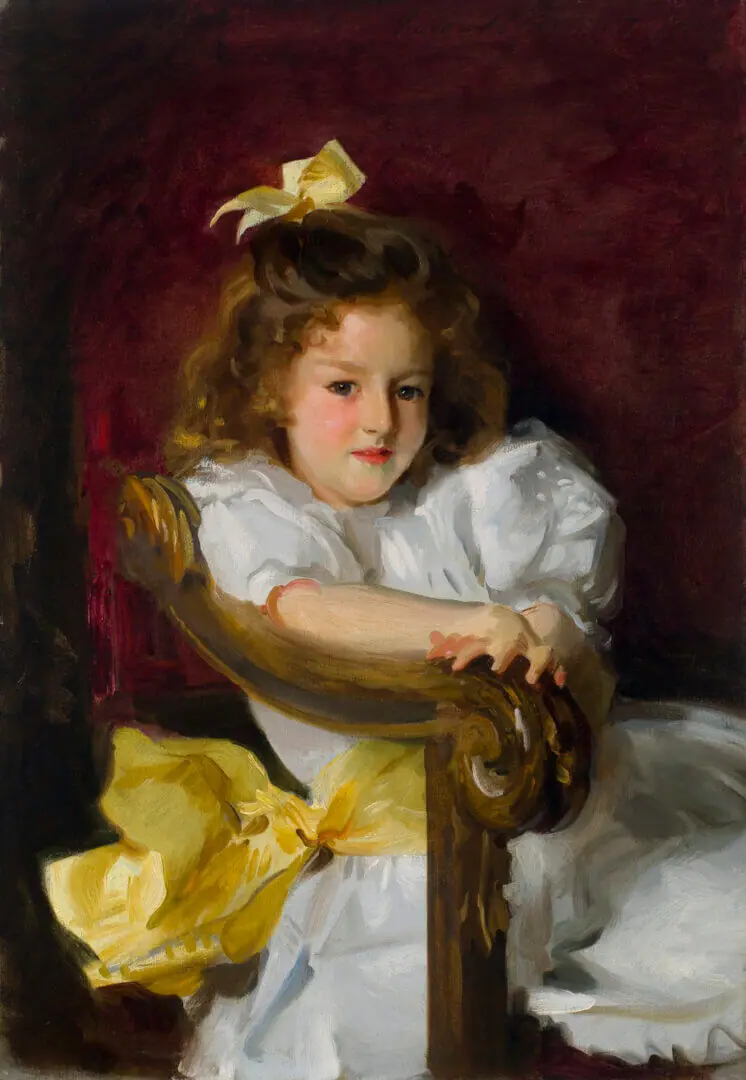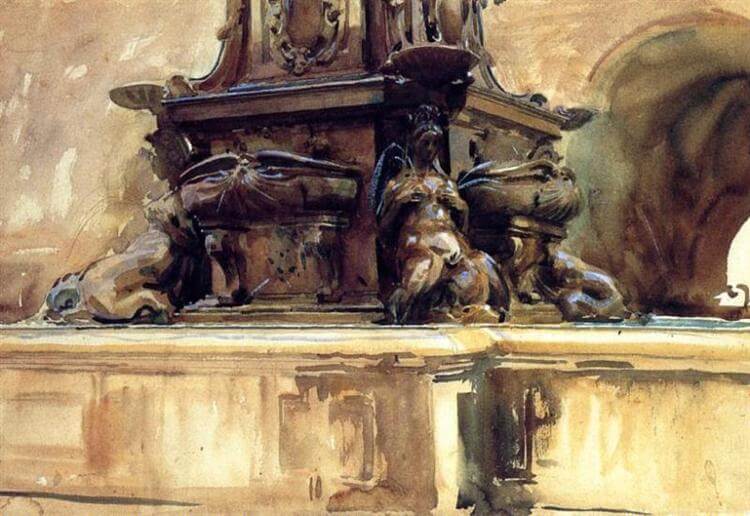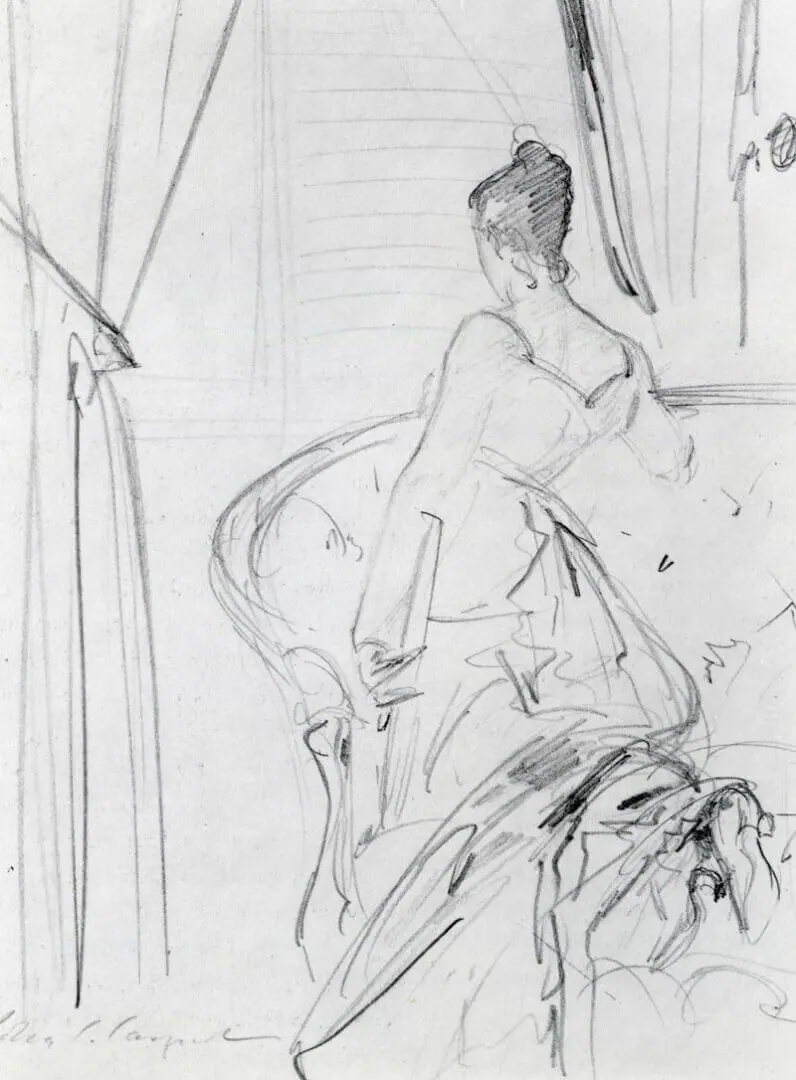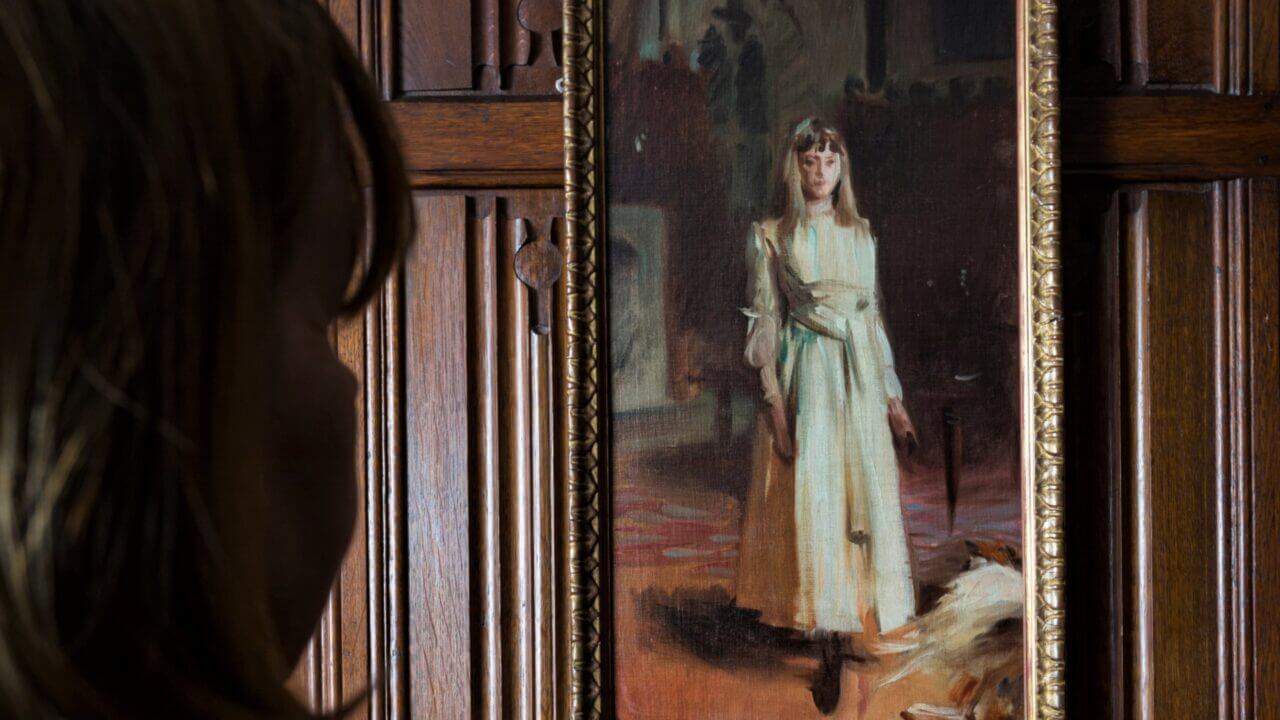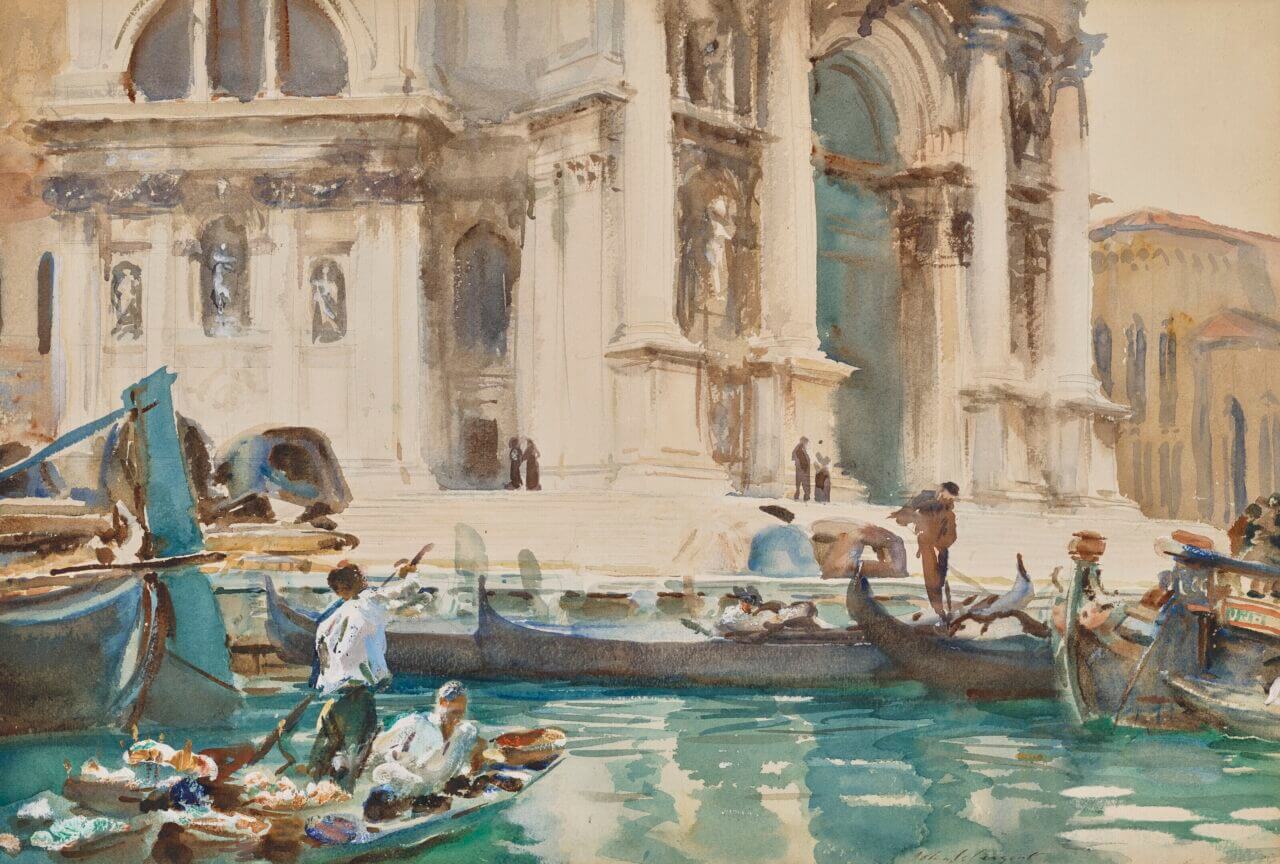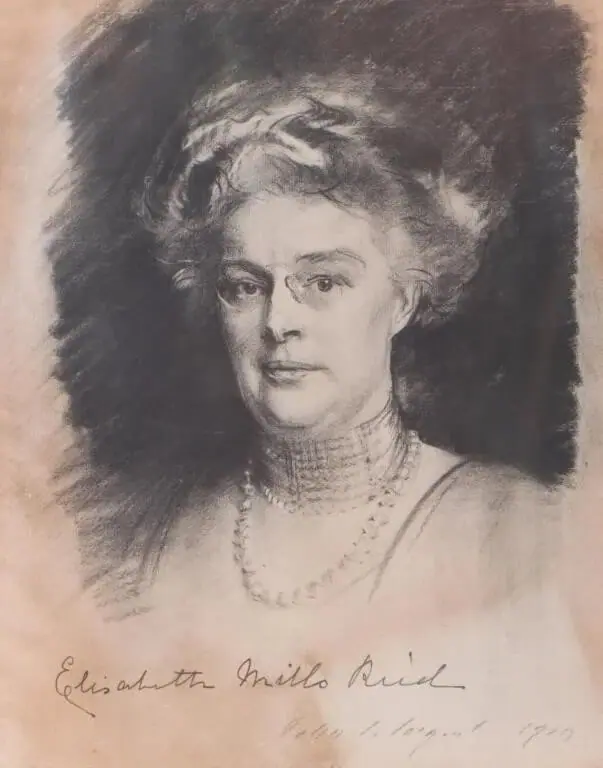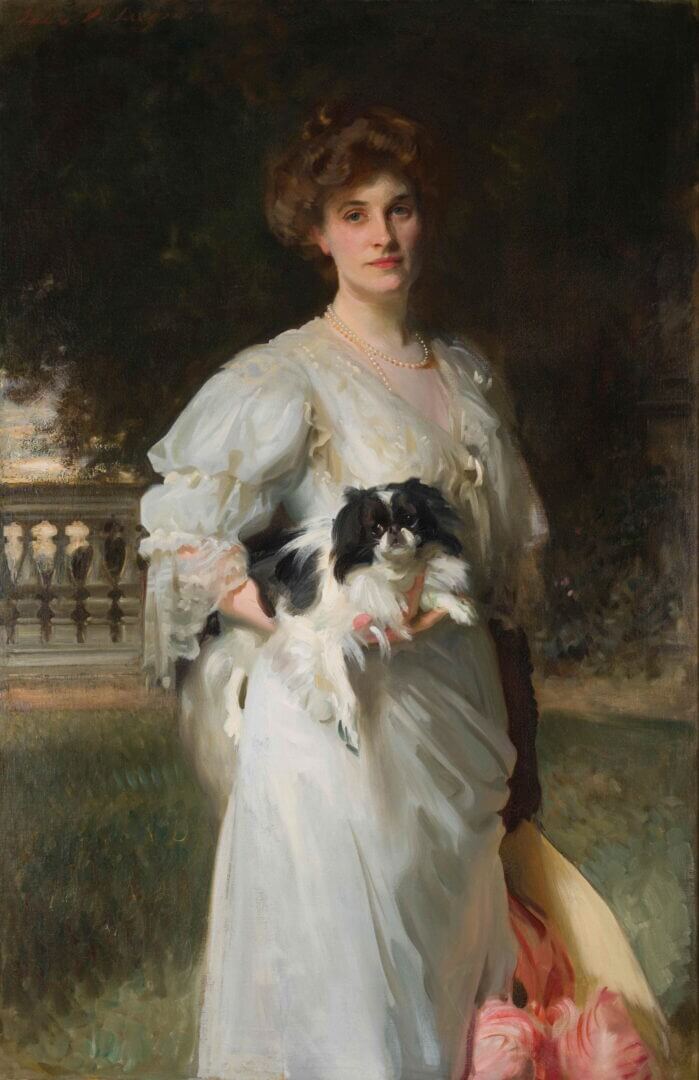John Singer Sargent, Self-portrait, 1892, National Academy of Design, New York
John Singer Sargent was born in Florence in 1856, but was always considered an American expatriate painter. He trained as an art student in Paris, where he first came to public attention in the worlds of Impressionism and academic painting. In 1886 Sargent moved to London, and a professional visit to the United States in the following year resulted in a plethora of commissions that established his reputation. Cosmopolitan and well-travelled, Sargent has been described as ‘the most international of American artists,’ and ‘as much a European as an Anglo-American’ (Bruce Robertson). Sargent holds the record as the most prolific 19th-Century American painter, his oeuvre comprising over eight hundred portraits and eighteen hundred subject pictures, including watercolours and mural paintings. Sargent is best known for his society portraits, however, for which he was dubbed ‘the Van Dyck of our times’ by sculptor Auguste Rodin.
John Singer Sargent, Mrs. Edward Burckhardt and her daughter Louise (detail), 1885, Private Collection, USA
A fine early example of Sargent’s portraiture is Mrs Edward Burckhardt and her daughter Louise (1885), currently offered for sale by Dickinson. This large-scale double portrait was first exhibited at the 1886 Paris Salon, where one critic judged it to be ‘one of the great pictures…most original and thoroughly distinguished.’ In the late 19th Century, the rise of plutocrats such as the mercantile Burckhardts created a boom in the market for portraits, which surged in price and popularity. The result was no less than a ‘renaissance in the art of portraiture’ (Elaine Kilmurray), despite its low position within the academic hierarchy of French art. As history painting declined, portraits outnumbered landscapes and scenes of daily life at the Salon, and stories about them generated much newsprint. The dialogue between artists, patrons, and collectors offered by the Salon became increasingly important, as Sargent relied more on exhibitions and portrait commissions than on dealers for commercial success. Outside of the Salon, Sargent exhibited at small, private exhibition venues, where – alongside grand manner portraits – his small-scale scenes of daily life appealed to the tastes of many collectors. Meanwhile, engravings and caricatures in contemporary journals ensured that Sargent’s works reached a mass audience.
John Singer Sargent, Group with Parasols (Siesta), 1905, Private Collection
The Decline and Rise of Sargent’s Market
While Sargent shaped and responded to the market for much of his lifetime, the First World War brought an end to the ‘gilded age’ of which he was the great recorder. Sargent’s reputation declined after his death in 1925, his works falling out of favour with collectors, critics, and art historians until the late 20th Century. Yet the current market for Sargent is stronger than ever before, and there has been a keen interest in the artist’s contributions both within and beyond portraiture.
The highest price ever paid at auction for Sargent’s work is $23.5 million for Group with Parasols (Siesta) (1905), sold in Sotheby’s New York in 2005. This makes him more valuable at auction than Titian, Delacroix and Damien Hirst. Seventeen of Sargent’s paintings have surpassed the $2 million mark at auction. Both at auction and privately, where many of Sargent’s pictures are offered, his market has continued to rise and his legacy continues to be celebrated.
In last 5 years there has been plenty of action in the Sargent market:
John Singer Sargent, Portrait of Charlotte Cram, 1900, Saint Louis Art Museum, Missouri
In December 2017, the Saint Louis Art Museum (Missouri) acquired a Portrait of Charlotte Cram (1900) for $2.2 million. According to SLAM director Brent R. Benjamin, this painting of a seven-year-old American abroad ‘fills a critical gap in the museum’s American art collection,’ and has proven a favourite among visitors.
John Singer Sargent, Bologna Fountain, c. 1906, Private Collection
In May 2019, two Sargent watercolours appeared at auction at Skinner in Boston. The works had previously been in a private American collection for close to a century. The two works date from Sargent’s late career, as he moved away from high-society portraits towards scenic views from his journeys in Europe and the Middle East. Both watercolours significantly outperformed their auction estimates, again highlighting the appeal of Sargent’s more atypical subjects (and media).
John Singer Sargent, Study for Madame X, c.1883, Frick Collection, New York
In August 2021, a sketch of Madame X (1883-84) – the notorious portrait of Virginie Gautreau that caused outrage at the 1884 Salon – was donated to the Frick Collection by New York collectors Elizabeth and Jean-Marie Eveillard, as part of its most significant gift of works on paper to date.
John Singer Sargent, Study for Elsie Palmer, 1889, Ightham Mote, Kent
In November 2022, the National Trust acquired Sargent’s oil sketch of Elsie Palmer (1889). This preparatory work for his celebrated Lady in White was displayed in Ightham Mote in Kent, where the Palmer family lived. Quite a coup for the National Trust.
John Singer Sargent, The Façade of La Salute, c. 1903, Private Collection
In November 2022, the inclusion of Sargent’s The Façade of La Salute (c. 1903) in the record-breaking auction of the Paul G. Allen Collection at Christie’s caused great excitement, and it was promoted as part of an extraordinary group of Venetian views by Sargent, Manet and Canaletto. Estimated to sell for $800,000-$1.2 million, it left little doubt as to whether it would break the auction record for a work on paper by Sargent and it realised $3.7 million.
John Singer Sargent, Portrait of Elisabeth Mills Reid, 1912, Private Collection
In January 2023, there was evidence of the growing demand for Sargent’s charcoal portraits. Sargent wrote to a friend in 1907: ‘I abhor and abjure [painting portraits] and hope never to do another, especially of the Upper Classes’. Later than year, at the age of 51, he took early retirement from oil portraits. To satisfy demand, his made portraits in charcoal, a medium which allowed completion in less than three hours rather than weeks or months. A charcoal Portrait of Elisabeth Mills Reid (1912) offered at Sarasota Estate Auction was estimated at $10-20,000 and sold for $69,300. This aspect of Sargent’s practice was celebrated by the Morgan Library exhibition John Singer Sargent: Portraits in Charcoal (October 2019 – January 2020), which made the case for Sargent as a ‘virtuoso draughtsman’.
John Singer Sargent, Portrait of Mrs. Frederick Guest (Amy Phipps), c. 1905, Norton Museum of Art, Florida
Most recently, in April 2023, the Norton Museum of Art, Florida announced its acquisition of Sargent’s Portrait of Mrs. Frederick Guest (Amy Phipps) (c. 1905). It depicts socialite and philanthropist Amy Phipps Guest, who sponsored Amelia Earhart’s first transatlantic flight in 1928. A gift from Phipps Guest’s grandson, Alexander M.D.C. Guest, the portrait was handed to the Norton in late 2022. It is now visible to the public for the first time since the 1940s.
While Sargent’s reputation continues to rest primarily – and perhaps justifiably – on large-scale portraits such as that of the Burckhardts, developments in the contemporary market reveal a growing interest in the full spectrum of his output, both in terms of subject matter and medium. With collectors increasingly determined to get their share of this ‘greatest American painter of the age’ (Paul Greenhalgh), Sargent has lately achieved a level of popularity unmatched since his death a century ago.


